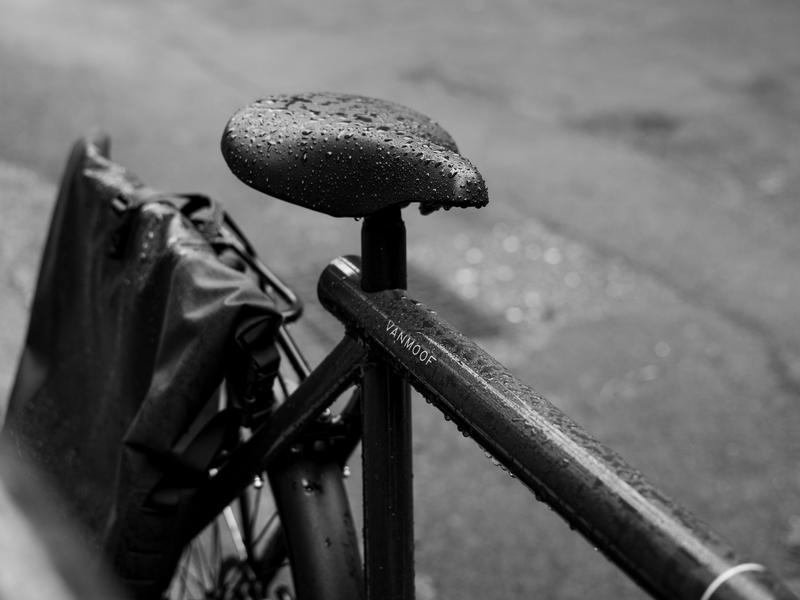It’s 2022. Both in terms of life and also this blog 2021 was the year that could have been but never was. There were many posts written about technology and what I thought of it, but through the editing cycle they seemed overly cynical, dour, and unhappy. Nothing I needed to say was that important that it was worth contributing to the general malaise of our era. So I wanted to kick of the first post of the year with something that technology has made more fun, Electric Bicycles.
The first question is why? Well, remember that first real bike, the first time you took off and left your parents trailing behind? That feeling of knowing that the neighborhood just got smaller, that you could now see your friends or visit the park with just two legs and this new toy? And that first bit rush of speed as you pedaled harder and took the corner too fast? If you do, those were probably the feelings that got you started in riding a bike.
As you get older though. Being gross and sweaty stops being fun so you don’t ride to visit your friends. Cycling gets more serious, you group ride and draft and lead or ride solo and manage your cadence, power, and heart rate. You don’t ride in the woods, you work on tricks and technique. It’s about the challenge, the effort, pushing for that extra mile, and the cyclist favorite word, suffering. Unless, of course, you’re sane and buy a car while the bicycle collects dust in the garage.
E-bikes bring back what it was like to cycle when you were a kid. You don’t need special clothes. You don’t need to be in incredible aerobic shape or live in the flat part of town. You can use your bike to get places, get outside, and have fun again.
So that’s the why. Now for the more complicated “what kind?”
Tejus’s General Thoughts on Bicycles
After decades of bike ownership and doing some of my own maintenance, components matter and you get what you pay for. Most parts of a bicycle are simple mechanical systems but differences in materials and tolerances is all the difference between something that works and something that keeps working. The super high-end is all about weight savings, but until you get to pro-team level stuff, you get what you pay for. Getting slightly better stuff drastically reduces the amount of time spent tinkering later. This is especially true in an e-bike where part of the draw is having something practical and reliable.
Every “real” cyclist is obsessed with weight. A lighter bike is easier to move and shaving a few grams off a bike takes a couple clicks on Amazon, whereas taking a few grams off the waist line (and keeping it off) is much harder, and if you’re serious, there isn’t much to lose. So it’s easy to dismiss weight and the high cost as something for silly people in spandex.
With bikes though, I really do find that you get what you pay for, until you get to the highest tiers. Losing weight requires better engineering. Mid-tier components are often better and lighter than their lower tier counterparts. Better materials means longer lasting and less maintenance. I have bikes that I’ve ridden for 1000’s of miles with the same gears and chains as the day I bought them. In that time I’ve rarely had to make adjustments.
Another factor in weight is that bike accessories aren’t made with e-bikes in mind. Normal bikes weight about 25lbs, but e-bikes generally start around 45 and that’s for the high-end models. The typical e-bike hits the scale in the 60’s and there are plenty of models up towards 100lbs. Your typical bike storage and car racks don’t support that kind of weight. Although e-bikes are heavy the whole point is that they have a motor so they go fast. The downside is that most of the wear and tear items, like brakes, wheels, and tires, aren’t designed for that weight and mass.
This is a somewhat windy way of saying don’t just go for the cheap option because it’s cheap. There’s a reason the more expensive options are more expensive and the cheap options might be more expensive overall when you think about everything that you’d want to do with the bike.
Finally, bikes are cool. The modern safety bike has existed for ~140 years and the general shape is instantly recognizable. That simple design though allows for an innumerable amount of variants and innovation. Unlike cars, it’s relatively easy for a dedicated individual or a small group to come up with novel designs and custom setups. There is almost certainly a bike you there that you would enjoy.
The E-bike Drive Mechanism
There are three objects that turn on any bike. The two wheels and the pedals (though if we are being pedantic, on a penny-farthing the pedals are on the wheel). Adding a motor to any of those will give the rider an assist.
The most common type is the rear-hub motor. This approach is cheaper and easier to design than the alternatives. Downtubes and seattubes make for good battery mounting points and have stable connections to the rear. Hub motors come with the advantage that they make the wheel spin directly, so they can augment any pedal assist with throttle control. The downsides of this placement are that the back of the bicycle becomes overloaded, which can cause faster wear on tires and spoke fatigue. Under full power, the torque can also lift the frontend, hurting mobility.
Less common on store bought e-bikes is the front hub motor. There is a more detailed breakdown of the differences here. Personally I own a VanMoof S2 which is fronthub and love having all-wheel-drive for the damp Seattle mornings.
The final type is the mid-drive motor which attaches to the bottom bracket. These motors are almost exclusively pedal assist and work by increasing the power of every pedal stroke. These give the best representation of what it would feel like to be a Tour-de-France capable rider.
I’ve used a few words that describe the drive mechanism without properly defining them. e-bike assist the rider in two ways; pedal assist and throttle. Pedal assist provides extra power while you pedal and most will automatically shut off when you stop pedaling. This is nice because you don’t have to relearn how to ride a bike. You stop when you expect, you just have a lot more power when you go. Throttles provide constant power whether you are pedaling or not. Laws have opinions about throttles but they can be very nice for very steep hills. If you do go for an e-bike with a throttle, make sure it has a shutoff when braking. Otherwise you might be in for a surprise when you have to make a sudden stop.
The benefit of all this additional power is that it’s easy to get around and if it’s easy to get around, you can wear normal clothes instead of Lycra. This is great if you want to do something practical like go to the coffee shop or the office and feel comfortable when you get there.
The Smart Revolution
So you can get and stay at the destination with comfort on the e-bike. Sadly one of the biggest ways bikes differ from cars is that cars generally tend to stay where you put them. Even in the nicest cities, this doesn’t seem to be the case with bicycles.
Attaching a power source to something changes that completely and there are numerous smart e-bikes out there. These are connected devices that ping GPS, have integrated locks, alarm when moved, and can be made difficult to use without the battery. Which takes away the most annoying part of popping into the store; remembering the locks, the five minutes of locking up, then undoing the locks with hands full of groceries. The auto-lift-gate is worth aersolizing a few dinosaur remnants in comparison. Smart e-bikes bring almost that same level of go and forget.
My Personal Bike Review

The VanMoof S2 original photo by the blowup
I ride a VanMoof S2. The deciding factor for me was that it looked like a bicycle. There is something about monitors and controls and wires going everywhere that stresses me out (perhaps it feels like a work desk?). This bike was clean, which also carried over to the riding experience. Unlock, set the power level, and go. The VanMoof has two gears that it automatically switches between making the experience like that of a single speed. I’ve always loved the simplicity of single speeds but they are completely impractical in my part of Seattle.
Though the VanMoof is a bit of a contradiction. It rides with the simplicity of a single speed, but it is in fact a smart e-bike. The bike is equipped with a GPS that pings a server with location, so you can always find it on your phone. There is an integrated rear wheel lock that can be unlocked through a code on the handlebar or via the app, which will also sound an alarm if the bike is moved. If you pay for the VanMoof subscription, they will even use the built in GPS to find the bike if it was stolen while locked. It really does feel like the future when you can get on your bike, go to the store, lock it, pay for groceries, and unlock and jump on all from a watch.
The technology doesn’t stop with the GPS. It has auto-lights, a built in “dash” for speed and battery status, and an electronic horn. All without the need for additional widgets and gadgets sprouting from the handlebars.
While I love the bike, it is far from perfect. Seattle has a different topography than Amsterdam and the bike lacks the power to make it up the hills to my house without significant human assist. The simplicity is a selling point, though that also makes it bespoke and not something that a normal bike shop can fix. Everything is integrated so repairs to the logic board and battery are challenging without access to a VanMoof store. Also since the batter is integrated you need to have a charger where you park your bike and outlets aren’t standard in most bike lockers.
Still, I will take the bike over the car in a lot of situations and a bike that you want to ride is the best bike of all.
Final Thoughts
E-bikes aren’t something that feel life-changing until you get one. They still need some level of infrastructure, but if you live in a place with semi-decent weather, there are so many times an e-bike is the most fun option. And it’s a fun option that comes with some health and environmental benefits to boot. If you live in a place where you see lots of e-bikes, it could be worth joining their ranks. They probably are onto something.
